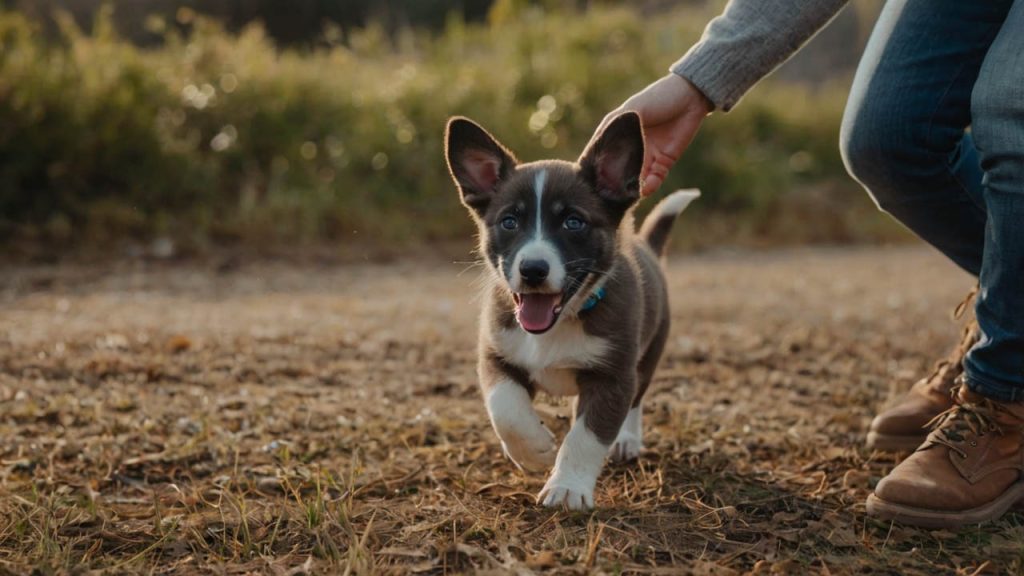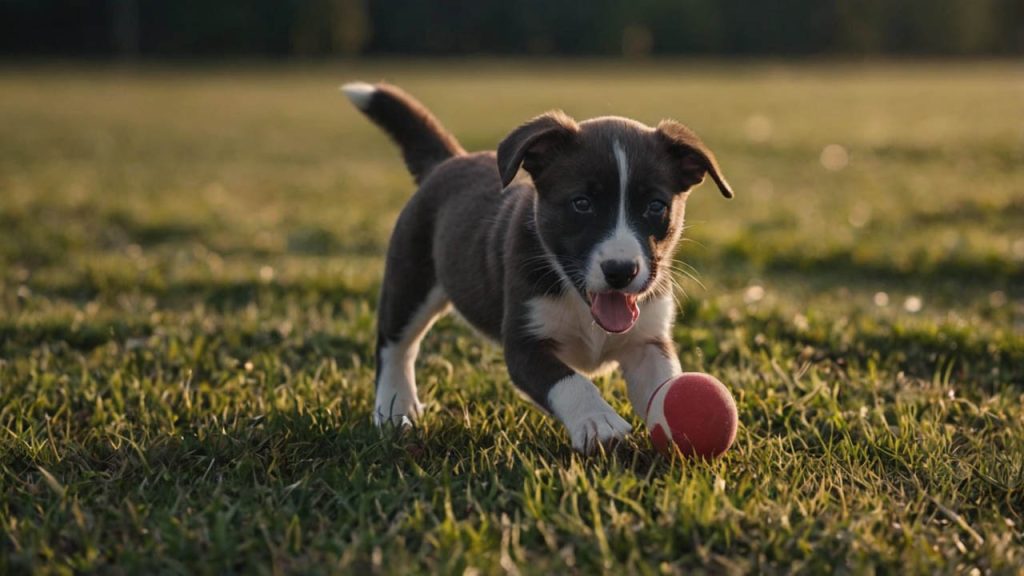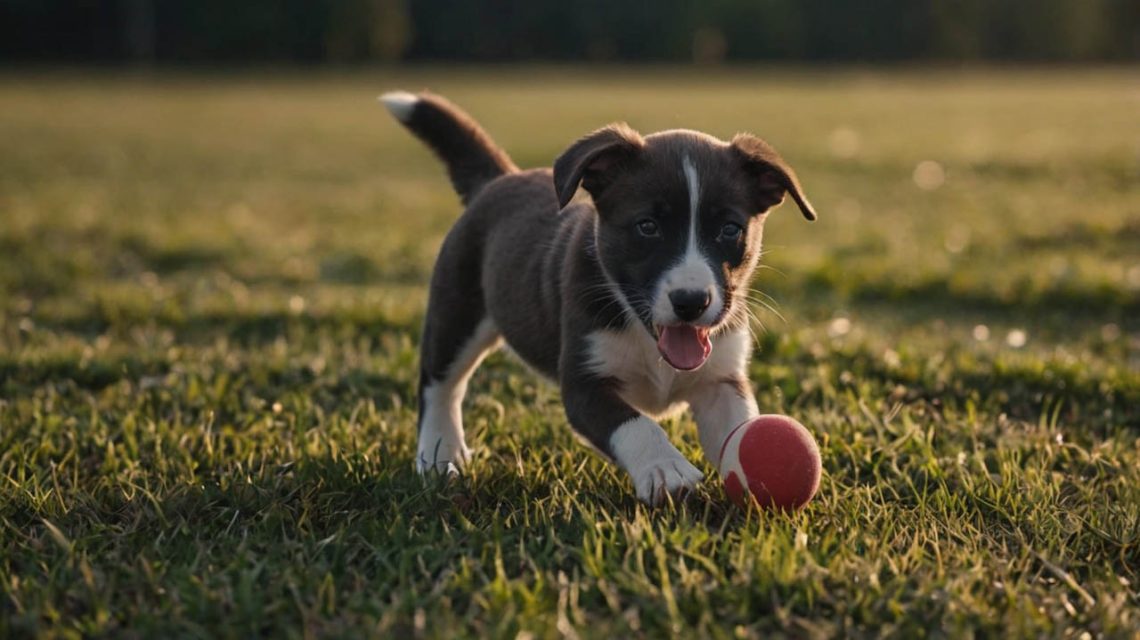Bringing a new puppy home is a whirlwind of joy, cuddles, and sharp little teeth. You likely have a vision of idyllic afternoons spent at the park, tossing a ball for your happy, energetic companion. However, the reality is often a puppy who grabs the toy and runs the other way. This is where learning how to teach a puppy to fetch becomes a crucial, and incredibly rewarding, training adventure. This isn’t just about a game; it’s one of the first and most engaging ways you can build communication, focus, and a powerful bond that will last a lifetime.
This comprehensive guide will walk you through a proven, story-like progression of steps designed specifically for a puppy’s short attention span and playful nature. We will break down the retrieve into tiny, successful moments, ensuring that every training session is a positive experience. Ultimately, when you master how to teach a puppy to fetch, you’re not just teaching a trick—you’re opening a channel of joyful interaction with your new best friend.
Why You Should Teach a Puppy to Fetch Early On
Before diving into the mechanics, it’s essential to understand why this game is so beneficial for a young dog. Fetch is far more than just burning off that boundless puppy energy. When done correctly, it’s a powerful tool for development and a cornerstone of a healthy, happy canine life.
- Builds a Strong Bond: Fetch is a team sport. Your puppy learns to work with you, creating a dynamic partnership built on trust and fun. This cooperative play strengthens your relationship unlike any other activity.
- Provides Crucial Mental Stimulation: A tired puppy is a good puppy, and mental exercise is just as important as physical. Fetch requires focus and problem-solving, which helps prevent boredom and the destructive behaviors that often come with it.
- Teaches Foundational Skills: The components of fetch—coming when called, dropping an item on cue, and impulse control—are building blocks for more advanced training and overall good manners. As noted by experts at VCA Animal Hospitals, play-based training is one of the most effective ways to teach young dogs.

Essential Prep Before You Teach a Puppy to Fetch
Proper preparation is the secret to stress-free puppy training. Setting the stage for success before the first toss will make the entire process of learning how to teach a puppy to fetch significantly easier and more enjoyable for both of you.
Choosing Puppy-Safe Toys to Teach Fetch
The right toy can make or break your training. For a puppy, safety and appeal are the top priorities.
- Soft and Teething-Friendly: A puppy’s mouth is sensitive, especially during teething. Opt for toys made from soft rubber, durable fabric, or puppy-specific materials. Avoid hard plastics or tennis balls, whose abrasive fuzz can wear down tooth enamel. Small balls can also be a choking hazard.
- Size Matters: Choose a toy that is large enough that your puppy cannot swallow it, but small and light enough for them to carry comfortably.
- Designate a “Fetch” Toy: Select one or two special toys that are used only for fetch training. When these toys come out, your puppy will learn that it’s time for a fun, interactive game with you. Consequently, this builds excitement and anticipation.
Gathering Your Positive Reinforcement Toolkit
Positive reinforcement is the gold standard for modern dog training. It means rewarding the behaviors you want to see, which makes your puppy eager to learn.
- High-Value Treats: These should be small, soft, and extra-delicious treats that your puppy loves. Think tiny pieces of chicken, cheese, or specially made training treats.
- A Distraction-Free Zone: Begin your training indoors in a quiet, confined space like a hallway or a puppy-proofed room. This minimizes distractions and helps your puppy focus entirely on you and the game.

A Step-by-Step Guide on How to Teach a Puppy to Fetch
Now for the fun part! We will build the game of fetch one small, successful step at a time. Remember to keep sessions extremely short—just 3 to 5 minutes at a time is perfect for a puppy’s brain. Always end on a high note!
Step 1: Building Toy Drive to Teach a Puppy to Fetch
The very first step in learning how to teach a puppy to fetch is to make them believe the designated toy is the most exciting thing in the world.
- Spark Their Interest: Sit on the floor with your puppy and introduce the special fetch toy with an enthusiastic, happy voice.
- Make It Move: Wiggle the toy on the floor, drag it away from them, and mimic the movements of prey. This engages their natural chase instinct.
- Reward Every Interaction: The moment your puppy sniffs, paws at, or mouths the toy, praise them lavishly (“Yes! Good puppy!”) and give them a treat. You are conditioning them to believe that interacting with this toy brings amazing rewards.
Step 2: Teaching “Take It” and “Drop It”
Fetch is a chain of behaviors. Teaching your puppy to willingly take and release the toy on cue is the most critical link in that chain.
How to Teach a Puppy “Take It”
- Offer the Toy: Gently hold the toy out towards your puppy’s mouth.
- Mark and Reward: The second their mouth touches the toy, say “Take!” in an upbeat tone and immediately reward them with a treat from your other hand.
- Build Confidence: Repeat this until your puppy eagerly puts their mouth on the toy when you present it.
How to Teach a Puppy “Drop It”
This command prevents the dreaded game of keep-away from ever starting.
- The Trade-Up Game: Once your puppy is holding the toy, hold a high-value treat right in front of their nose. In order to eat the treat, they must open their mouth, causing the toy to fall.
- Add the Cue: The instant the toy drops, say “Drop it!” and let them have the tasty treat.
- Practice Makes Perfect: Repeat this process many times. Your puppy will quickly learn that “Drop it!” means “let go of the toy to get an even better reward.” As the American Kennel Club (AKC) suggests, this positive association is key to a reliable drop.
Step 3: The First Indoor Mini-Fetch
With the foundational cues established, it’s time to put them together in a very short-range game.
- The Tiny Toss: In your quiet indoor space, sit on the floor and toss the toy just a foot or two away. Use an exciting verbal cue like “Get it!” as you toss.
- Encourage the Return: Your puppy will naturally go to the toy. As soon as they pick it up, become the most exciting thing in the room. Use a happy voice, clap your hands, and pat the floor to encourage them to come back to you.
- Cue the Drop: The moment they arrive, ask for your “Drop it!” command. When they do, reward them with a treat and tons of praise. Successfully combining these actions is a huge milestone in how to teach a puppy to fetch.
How to Advance Your Puppy’s Fetch Skills
Once your puppy is consistently retrieving the toy from a few feet away indoors, you can gradually increase the difficulty. This transition is a delicate but exciting part of the process.
Moving the Fetch Game Outdoors
The great outdoors is full of new sights, sounds, and smells.
- Start in a Secure Area: Begin in a safely fenced backyard or a quiet, enclosed space. This prevents your puppy from getting distracted and wandering off.
- Use a Long Line: Initially, keep your puppy on a long, lightweight training leash. This provides a safety net, allowing you to gently guide them back to you if they get sidetracked.
- Keep Distances Short: Your first few outdoor throws should be just as short as your last indoor ones. Your goal is to prove to your puppy that the game works the same way here. You can slowly increase the distance as they succeed.
Managing Puppy Distractions
A leaf blowing in the wind can be more interesting than a toy to a young puppy.
- Increase Your Value: You and the game must be more exciting than any distraction. Use an animated voice, reward generously, and keep the pace of the game quick and fun.
- Know When to Stop: If your puppy is too distracted, that’s okay. It simply means the environment is too challenging for their current training level. End the session on a positive note with a simple command they know (like “sit”) and try again later or in a less distracting area. This is a vital part of how to teach a puppy to fetch without causing frustration.
Troubleshooting: How to Teach a Puppy to Fetch When Things Go Wrong
Every puppy is different, and you may encounter a few bumps in the road. Here’s how to navigate the most common challenges.
Solving the “Keep-Away” Game
This happens when the puppy finds more value in possessing the toy than in returning it.
- Solution: Never Chase! Chasing your puppy reinforces the keep-away game. Instead, do the opposite. Turn and run away from them excitedly. This often triggers their instinct to chase you, and they will bring the toy along with them.
Encouraging a Full Return
Sometimes a puppy will drop the toy halfway back to you.
- Solution: Reward Proximity. If your puppy drops the toy a few feet away, don’t go get it. Instead, stay where you are and excitedly encourage them to bring it closer. Reward any small movement towards you. You are teaching them that the reward only happens when the toy is delivered to your hands. This is a subtle but important detail in mastering how to teach a puppy to fetch.
The journey of how to teach a puppy to fetch is a perfect example of the magic of dog training. It starts with a simple goal—a game of retrieve—but results in something far more profound: a deep, communicative, and joyful partnership. Be patient, stay positive, and celebrate every tiny success.
Ready to build an amazing bond with your new puppy? Grab a soft toy, some tasty treats, and start with Step 1 today. We’d love to hear about your progress! Share your puppy’s first fetch moments in the comments below. For more tips on starting your life with a new pup, check out our Puppy Socialization Checklist.


